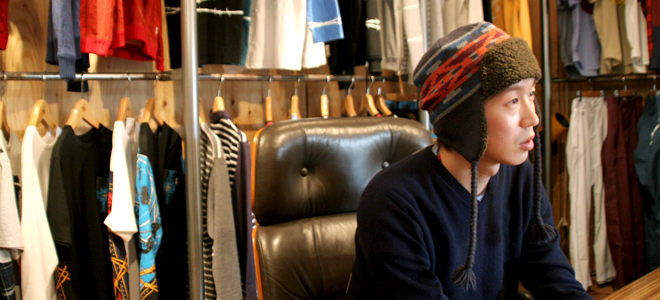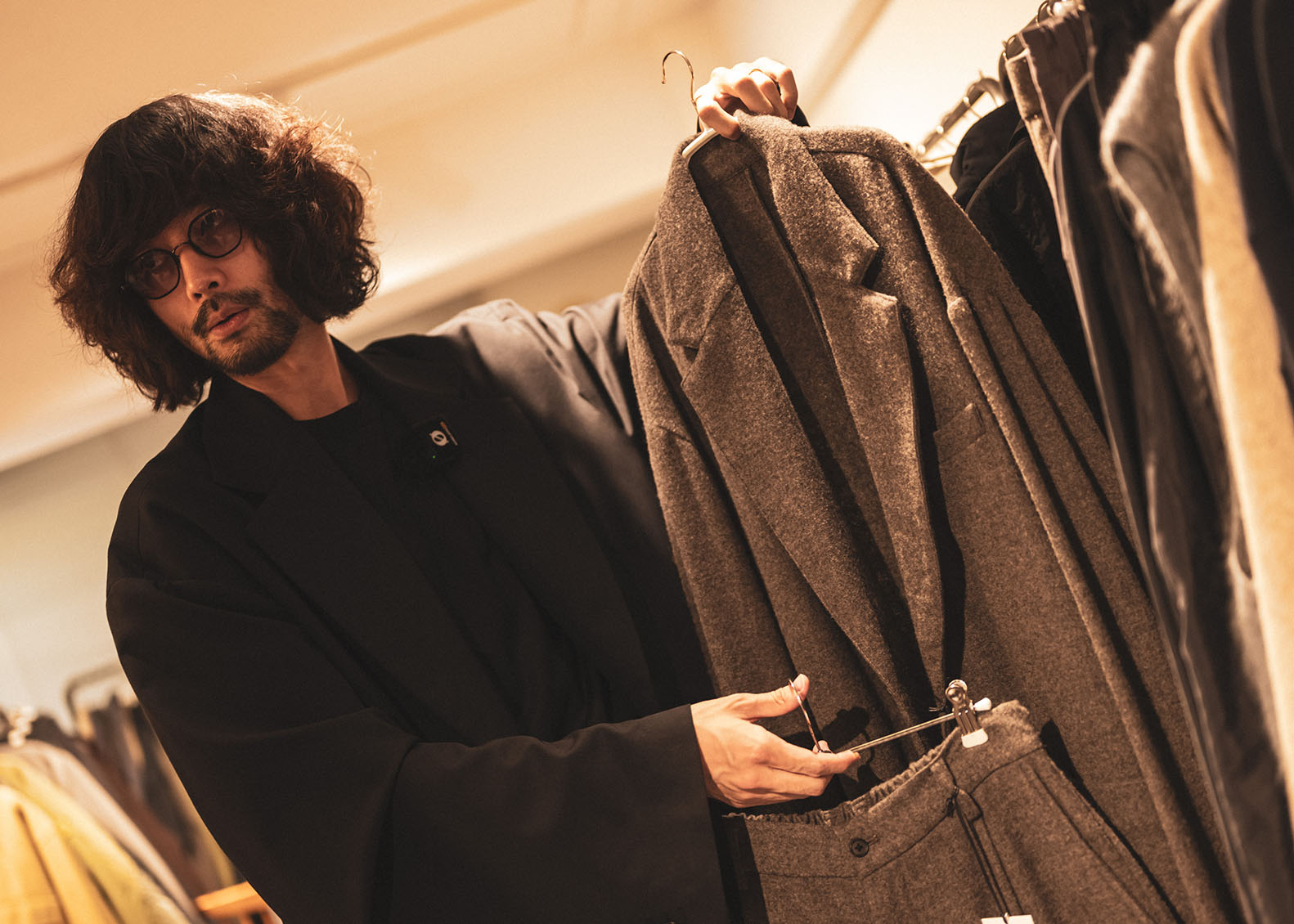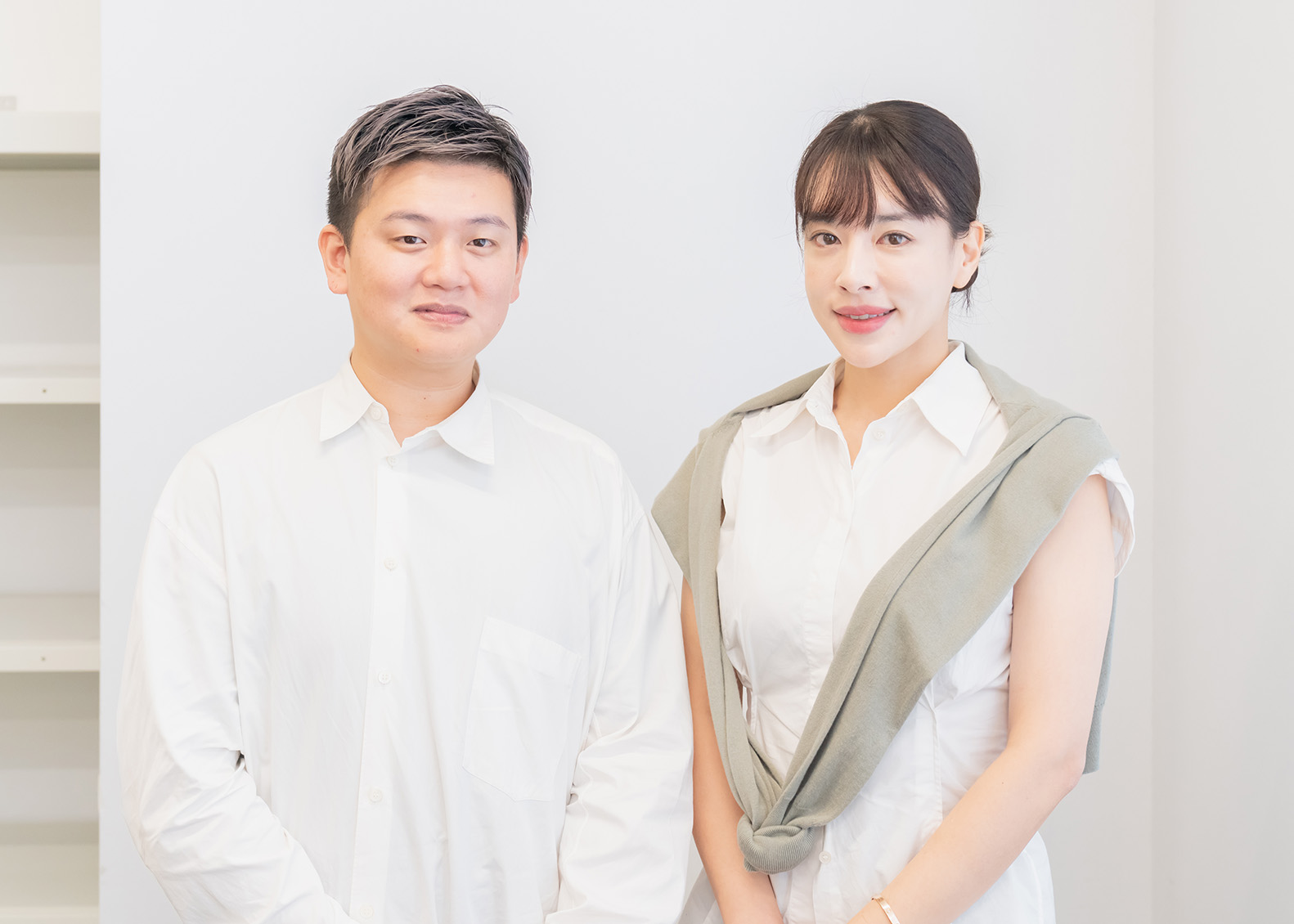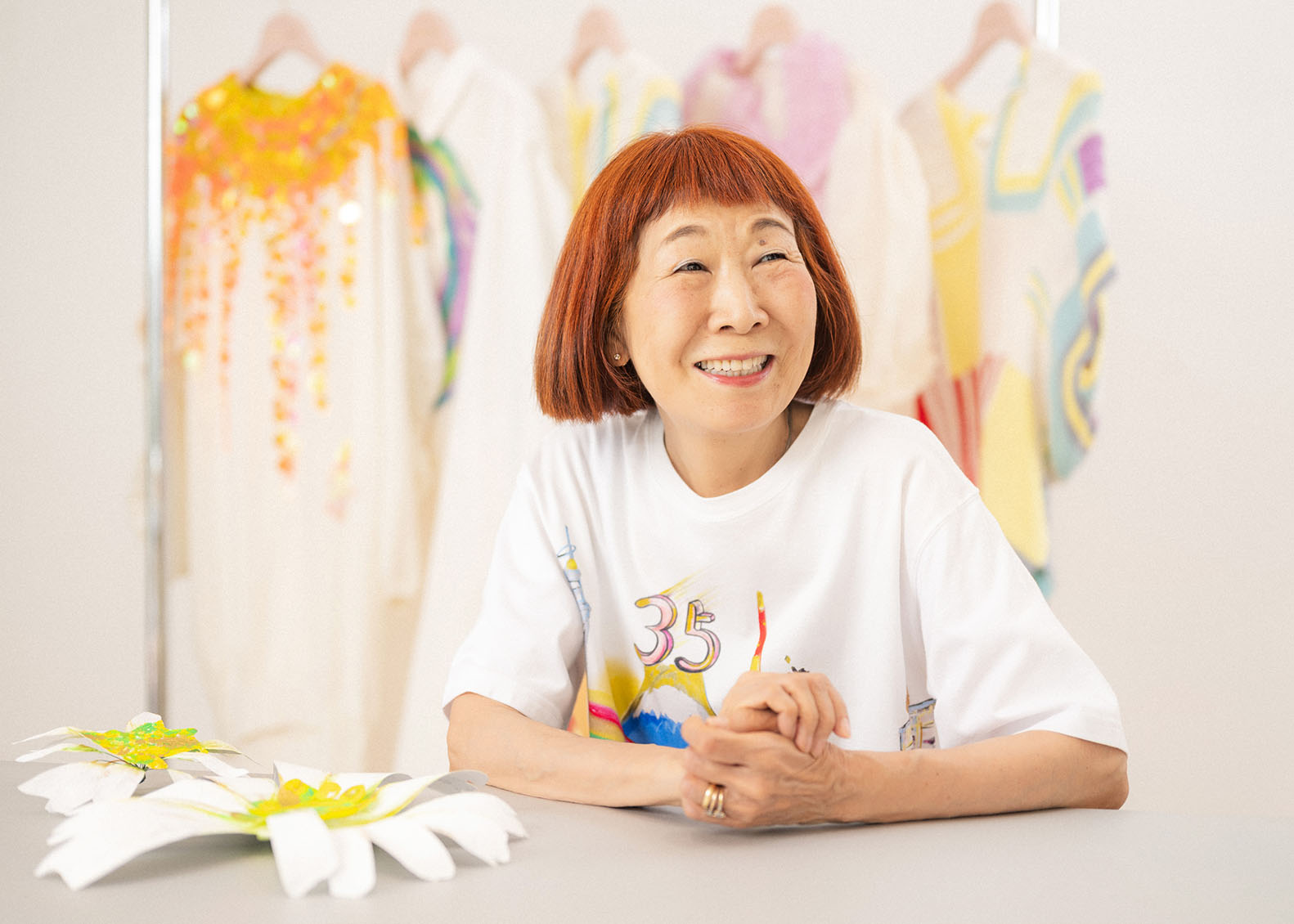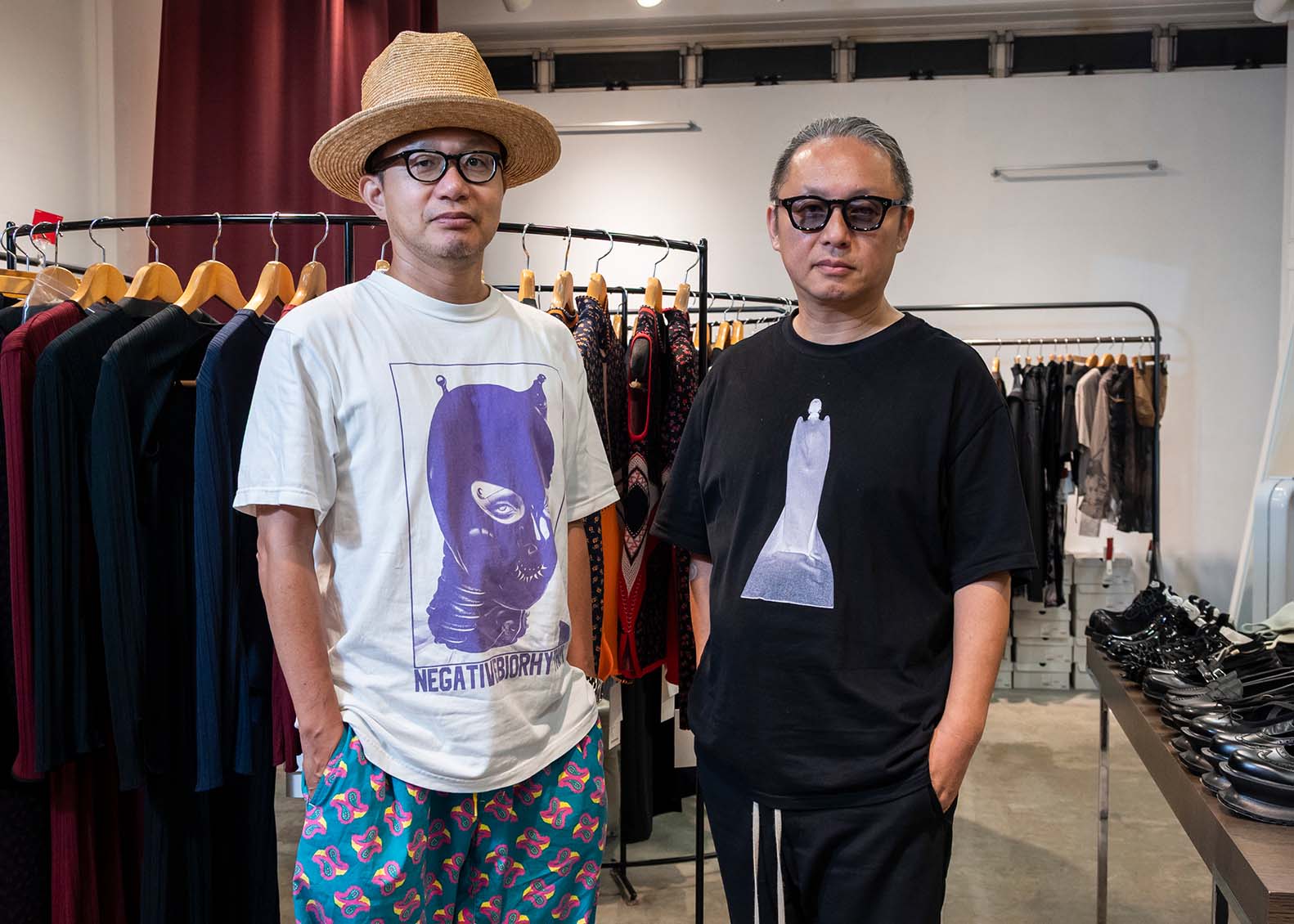Hiroaki Shitano
The main event “VERSUS TOKYO” held on the last day of the “Mercedes-Benz Fashion Week TOKYO 2012 S/S”, which was also open to the public, was produced by Yuichi Yoshii of THE CONTEMPORARY FIX. It was on this stage that WHIZ LIMITED, led by Hiroaki Shitano, had its first runway show, yet still expressed the qualities of a brand that had been established for over a decade.
Shitano is quick to propose unique Tokyo styles that transcend both mode and street fashion, and is fixated on creating items that he desires; in a way, he also maintains his perspective as a consumer. Shitano, who has gained a huge following, talks to us about what went on behind the scenes at the show and about the stance that the brand takes.
First, please tell us your impressions of the show last October, which was the first show for your brand.
Shitano: It started when we received an invitation from Mr. (Yuichi) Yoshii. Mr. Yoshii and I got to know each other in 2010, when he came to our exhibition for the 10th anniversary of our brand, where we announced our collection in which we had renovated our past archives. Until then, I had thought that shows were for a restricted group of people, and that small brands such as ours could not participate. However, we were able to participate after being invited by Mr. Yoshii. We were doing something that we’d never done before from scratch, so it was as though we had returned to the days where we first launched the brand. This was very refreshing.
Were there things you changed for the show, such as in the way you made the clothes or the style?
Shitano: We had already decided upon the designs when we heard about this (VERSUS TOKYO), and we wanted the show to be an extension of what we have done so far, so there were no elements that we drastically changed. I’ve always handled styling for catalogues and presentation images, etc., and initially I thought about being more deliberate in the presentation for the runway show. However, when I visited the venue, it was a fairly normal-looking place outdoors, so I thought that doing too much may be excessive. I decided to present our collection as we normally do, after checking the flow of the show with the person in charge of stage direction.
Please tell us the theme for your 2012 S/S collection.
Shitano: The theme is “UNITE”. After 3.11, we have been seeing an increased number of demonstrations taking place in Tokyo as well, and this feeling of anger was the source of my inspiration. I incorporated my own feelings into the clothes. In general, I perceive clothes as clothes, and I try not to incorporate my own feelings and tastes into them, but this time was an exception.






WHIZ LIMITED 2012 S/S
What responses did you get after the show?
Shitano: In addition to the clothes, there were several elements that we were able to add on, such as music, and so it was easy to get the image across. Also, we got responses that we did not get with our past exhibitions, catalogues, and videos, etc., so I think our show was quite refreshing for the people that came to see it. I’m sure there was something that only the people that were there were able to feel, and it made me want to do it again.
You also exhibited some special items the other day at the “VERSUS TOKYO” of “TOKYO FASHION WEEK in ITALY” held at the Pitti Immagine Uomo in Florence.
Shitano: We exhibited two items that we remade from our recent archives using different fabric, and one item for which we remade a pair of denim trousers that we made using Sashiko stitching a long time ago into a denim jacket. Sashiko stitching conveys Japanese-ness, so I put it in there somewhat deliberately. I don’t know about the specific responses that we received, but Hiromichi Ochiai of FACETASM, who was there, told us that it was good. I look forward to the responses that we will get in the future.





Exhibition items at the “TOKYO FASHION WEEK in ITALY”
Were you already acquainted with the designers of other brands such as FACETASM that participated in “VERSUS TOKYO”?
Shitano: I didn’t have any acquaintances, but I knew a bit about the activities of the various brands.
I had the opportunity to talk with many of them, and I found out that many things that were natural to me were inconceivable for them, and that their approaches and stances were completely different from ours. For instance, we prefer not to announce our new collection until about one week before the items hit the stores, but in contrast, they want to announce their new collection as soon as possible in shows, etc. I withhold information on purpose since I feel that revealing our collection to the media too early would make it lose its explosive power, but when I say this to others, they are surprised (laughs).
What led you to become a fashion designer?
Shitano: The high school that I went to did not have a uniform, and from those days I really liked fashion, read a lot of magazines, and bought many clothes and records. At the time, I wanted to become a stylist in the future, but I questioned whether you can learn such things (stylist work) at school. So, rather than going to a vocational school, I started working part-time at a clothing store. After graduating from high school, I immediately bought a Mac and started to design, print, and sell T-shirts. This eventually expanded to include hats, letterman jackets, and jackets. When I was 24, I made as many samples as I could with 1 million yen, and started my brand.
Did you have a specific vision when launching your brand?
Shitano: I didn’t really have one. At the time, Urahara brands were at their peak. There were so many things that it seemed impossible to come up with something new, so I decided to just make and present things that I liked. I didn’t have any particular connections in the industry either, so I just made clothes and carried samples around in a large bag so I could show them to people at any time.
When a friend was talking to someone that worked for a magazine, I would take out my samples on the spot and show them to the person. Often, people in the industry asked me “who do you know, and where did you come from?” but in essence, I always insisted on making things that I wanted. In a sense, I’ve maintained the same perspective as my customers, which is still the base of our brand.
Is there something that you value when communicating with the consumers?
Shitano: At the launch of a new season, I try to go to the stores and talk to customers. Also, there is an annual event where WHIZ fans nationwide gather in Tokyo. This event is not announced through the media, and only the customers that know about the event gather. It serves as a place for exchanges where we show videos of our new collection ahead of the season launch each year. Since everyone has in common that they like WHIZ clothes, they become friends straight away. We basically have been repeating the same thing every year for 10 years since we launched the brand. This kind of communication with our customers is a great motivator, and I’m very supported by this.
It seems that the relationship with your consumers serves as the largest foundation supporting the brand.
Shitano: I think this is true for anyone that expresses something, but it is impossible to create something that is liked by everybody. Your creations are evaluated only after they are made and I imagine that there are people in the industry that do not understand what you are doing, but it is very encouraging to turn around and see people that buy your clothes. Rather than dwelling too much on people’s responses, I create things that I think are good without getting too frustrated. I’ve felt this way ever since launching the brand, and I want to keep continuing to do so.
I heard that you are presenting your next collection in a show as well. I’m really looking forward to it.
Shitano: Rather than getting all fired up because it’s a show, I want to present clothes that can be worn anytime, anywhere. If a brand such as ours does a show two or three times, I think that other brands may also think about giving it a go. Of course, there are brands that are more suited to shows than others, but I simply want to see more shows of my friends’ brands (laughs). I feel like there’s no need to be so nervous, and I encourage other brands to overcome their barriers to try doing shows.

